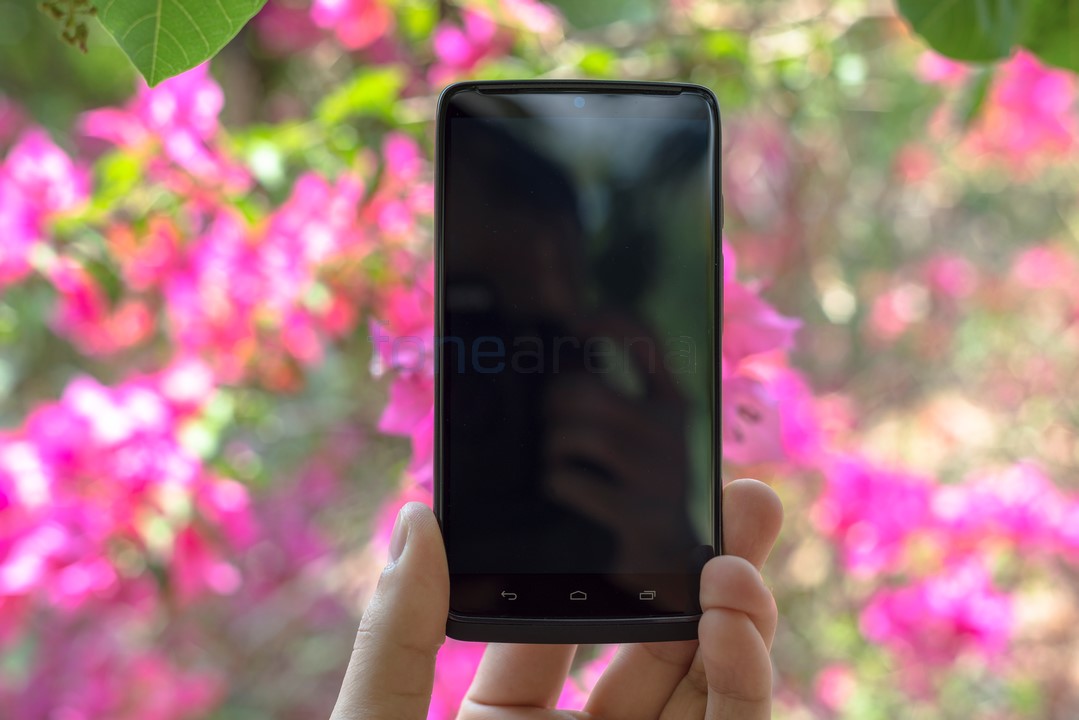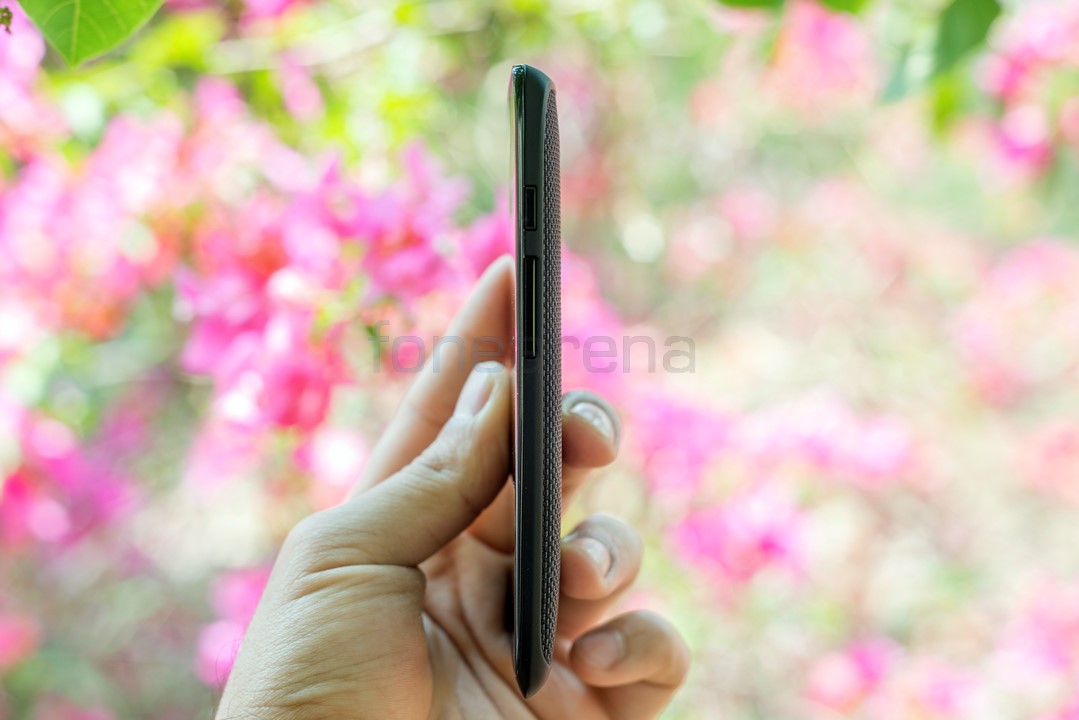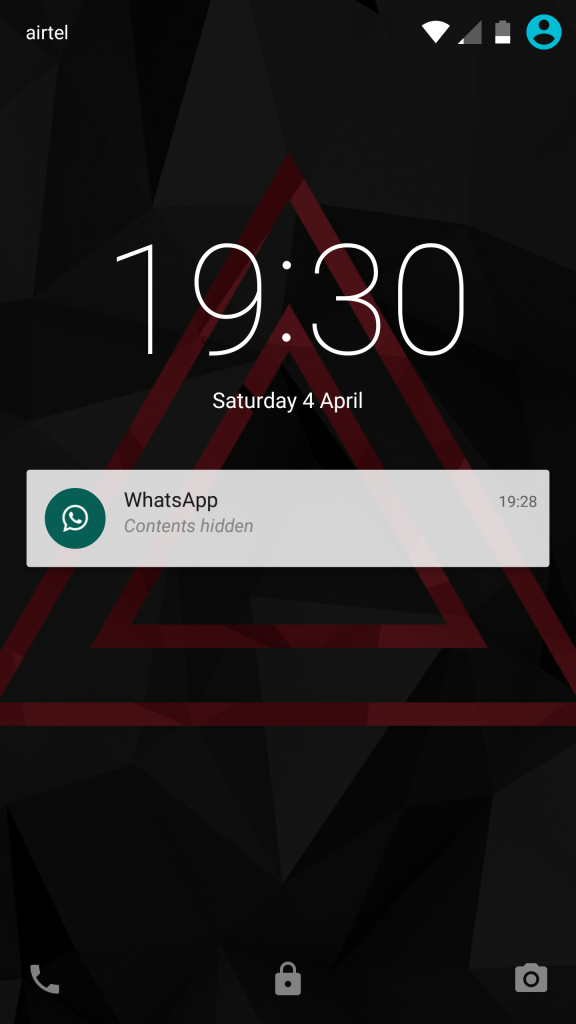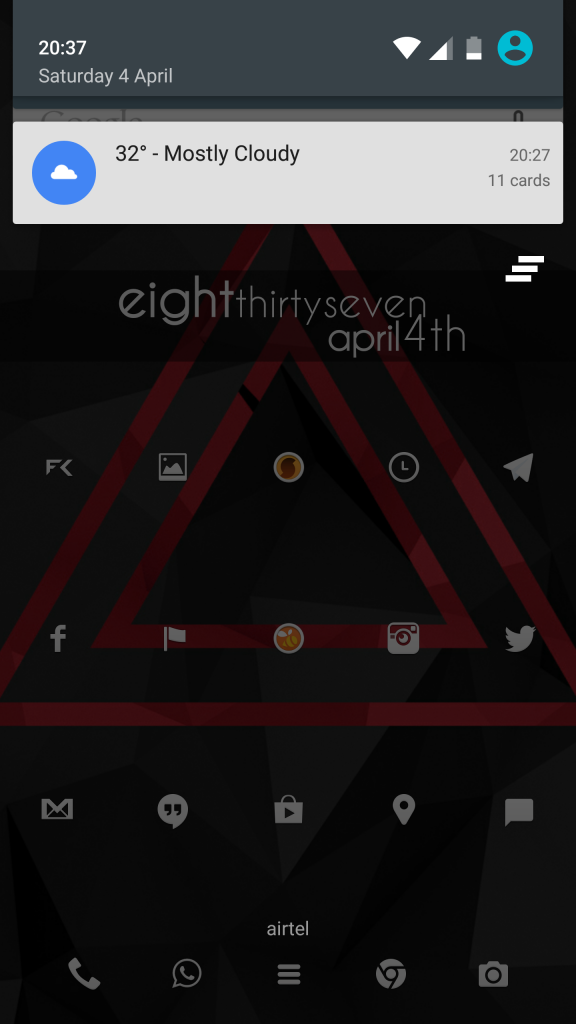
Introduction
When Google announced the Nexus 6, there were two main issues that customers complained about. One was the pricing which was unusually high for a Nexus phone and secondly its size. The device housed a 6 inch display and made it one of the biggest phones on the market. While phablets are getting more and more in demand these days, 6 inch is still considered to be quite big unless you’ve bezels as slim as LG has managed on their G2/G3 and the Sharp Crystal series. That is why most manufacturers such as Samsung haven’t gone beyond 5.5” or 5.7” for their phablets fearing it may be deemed too large.
The Nexus 6 is a powerhouse of a smartphone but because of it’s size many people were put off. That’s when Motorola announced the DROID Turbo under the Verizon network in USA. Because of the close association with Google and the near stock UI experience that Motorola carry, many hailed it to be the Nexus 6 that was actually supposed to be. But the downside was that it was restricted to customers in the US alone.Motorola launched the handset under the moniker of Moto Maxx in Mexico later on but still the availability both within India and globally was still uncertain. The good news came to Indian customers when Flipkart announced that they would be bringing the device to India under the name of Moto Turbo. While some of the technical specs aren’t as impressive as the handsets we saw announced at MWC in Spain, it still is a powerful smartphone and we review the device to see how well it fares in real life.
Unboxing

The device ships with the following items in box:
- Motorola Moto Turbo in Black color
- 2-pin charger
- micro USB cable
- Earphones with microphone
- Quick start guide
We have already posted our unboxing of the device which you can view in the video below:
httpv://www.youtube.com/watch?v=FR6zxLZOZV8
Design and Build Quality
From the first time you lay your eyes on the device, you immediately recognize that it is a Motorola device. The design is very similar to the Moto E, G and X devices that we’ve seen over the past couple of years. On the front you can see the large 5.2” display above which there is the front facing camera and the loudspeaker/earpiece grille. Unlike most recent Motorola devices, the Moto Turbo choose to go for hardware capacitive keys instead of on-screen keys. Below the display, you will find the return, home and multi-tasking capacitive keys. There is a smooth rubber lip below the keys that run all the way to the sides and back of the device.

Moving onto the back, you will again notice a familiar design and arrangement of elements. At the top center you’ve the camera unit which is recessed into the body. This is a good thing and acts as a shield against scratches and you also don’t accidentally touch the lens often as a result. The camera unit is surrounded by two LED flashes, one on either side. Below the camera unit you will find the Motorola logo which is a proper engraved metal piece rather than just paint. The major difference that you will notice compared to the other models of Motorola is the material for the back cover. The variant which we are reviewing has a Ballistic Nylon back. It’s a material that was developed initially for the army and is something that you can see in active/sports gear nowadays. It provides really good grip and has a very unique feel, something that reminds us of the back cover on the OnePlus One. Both the devices don’t feel the same but both feel very much different compared to all the other devices on the market at the moment.

The back cover is also totally resistant to fingerprints. The back cover however does collect dust or dirt from time to time so you may have to clean it once in a while. If you are thinking of removing the back cover and washing it under a tap, then your idea won’t work as the back panel is not removable. You will have to use a brush or something similar to remove the stuff stuck in between the material. We’ve read reports online that state that the material does get frayed over time but in our use we didn’t find that to be true. In India you are restricted to just the Ballistic Nylon variant and the same goes for Mexico as well. However in the USA, you also have Kevlar back variant which is also unique in its own way.

The left side of the device is empty devoid of any buttons or ports. On the right side you have the lock/power key and the volume rocker button. The buttons also have a textured surface and helps your fingers distinguish them from the smooth rubber bezel. The keys seem a bit flush with the surface and we would’ve preferred if it were a bit more raised, at least in the case of the power key.

On the top you have the 3.5mm audio jack and on the bottom you have the micro USB port. There’s an interesting curved design around the micro USB port that makes the phone easier to hold than if they had made it fully curved.

Now if you’re thinking where the SIM slot on this device is, you’ll have to look beneath/behind the volume rocker key. Motorola have done a wonderful job of doubling the volume rocker key as a nano SIM tray as well. Another good thing is that you don’t need a SIM ejector pin to take it out. You simply slide you finger under the volume key and pull it out. Once you put your SIM in, you push it back in and that’s all.

The phone is a bit thicker than most phones nowadays primarily owing to the fact that it has a 3900 mAh battery under the hood and also supports Qi charging out of the box. Owing to the same reasons, the device is also heavier (169g) than other devices of the same size. But that doesn’t mean that the device is tough to handle. The phone feels great in the hand and the extra thickness and weight is something that you will get used to very quickly. The Nylon back and the curved edges also help a lot in the handling aspect as it provides good grip and feel. The handset does however feel a bit longer than it should’ve been. Motorola could’ve stuck to on-screen keys and reduced the overall length of the device. One handed use is still possible but maybe a challenge for users with smaller hands.
The phone also has a water repellant coating that makes it slightly resistant to water. It’s not waterproof like the XPERIA devices that Sony makes nor like the Galaxy S5 from Samsung. But it still is capable of being submerged under 6 inches of water for up to 1 minute. That’s good enough to prevent your device from being rendered useless in case of an accidental drop into a bucket or a puddle. Also it makes you more confident about using the phone during a drizzle or light rain.

Overall the device feels really sturdy and very well-built. The Ballistic Nylon gives it very good grip and handling not to mention a very rugged look. The only downside is that it’s available only in Black colour. Perhaps a different colour option would’ve added to its appeal even if it was a darker shade.
Display
Up until the announcement of the Galaxy S6, the Moto Turbo had the highest pixel density for a smartphone screen. That is also another reason for the hype surrounding the handset. The device has a 5.2” SuperAMOLED display with 2560*1440 pixels resolution (565 pixels per inch) that is protected by Gorilla Glass 3. In real life the display look as good as it sounds on paper. Really deep blacks and vibrant colours along with the superb sharpness make this display really attractive to use. The extra resolution doesn’t mean its miles better than 1080p devices. The difference between 1440p and 1080p is negligible as compared to the difference between 720p and 1080p. But even then, the difference is noticeable especially when reading text. But you’ll have to look hard though and even compared a similar 1080p screen side by side to actually notice it properly.

The brightness is really good too and despite most 1440p panels having low brightness as opposed to their 1080p compatriots, this really doesn’t have that issue. The viewing angles are stellar as well. The only slight dent in the displays performance would be the sunlight legibility. While it is still good, it isn’t as good as one would get from a Note 4 or S5 for example. The main reason from this we gather because the glass protecting the display is quite reflective. The screen feels quite good to use. It is smooth and there is an ever so slight curve towards to edges so swiping feels natural too. The display is quite well protected from scratches and while we didn’t drop the device, we are pretty sure that the display is protected well from drops also especially considering the bezel is a bit raised from the screen level.

The capacitive buttons have a white backlighting and are lit evenly. There is not option to turn the backlighting off but you can choose to enable or disable haptic feedback for the keys however we found that the haptic feedback isn’t very strong. Might not be an issue for everyone but generally we feel we either want good feedback or none at all. Another thing missing from the device is the lack of a notification light. Considering the price range of the device, one would definitely expect this to be an included feature.
Calls, Connectivity and Messaging
The dialer app has three tabs – one for speed dial, one for recent calls and one for contacts. The speed dial shows you your favourite contacts in order of frequency of the calls you’ve made along with thumbnails. If you’ve not assigned photos to a particular contact, you get silhouette figures in various colours. The different colours somewhat remind you of Windows Phone UI. The ringing and notification volume is more than enough for any environment and you also get good vibration that you can enable along with the alerts.

The call quality is really good and the voice of the person on the other end can be held clearly without any distortion and vice versa. The noise cancellation works well thanks to the three microphones. The earpiece does a really good job at loudness too and can be heard even in noisy environment. Likewise the loudspeaker is clear enough but we found it lacking a bit in terms of loudness especially when there’s more background noise involved.

The phone comes with Google keyboard preloaded and it’s quite easy and efficient to use. The phone’s width is well within the limits to type comfortably on and it’s not too small that it would cause people with big fingers to mistype.

The phone supports all the latest standards of Wi-Fi 802.11 including n and ac. It has built-in NFC, micro USB 2.0 and Bluetooth. There is no microSD card slot for expansion of memory but the device does have 64GB of on board memory out of which 53.26GB is available to the user. We feel that this storage should be more than ample for most users on the market. But for certain power users who rely on microSD cards, we’re afraid your choices are limited to the USB OTG flash drives or getting a OTG adapter for your flash drive or HDD.
Software and Performance



The Moto Turbo ie the Indian variant runs Android 5.0 Lollipop out of the box. The software and UI of the Moto Turbo can best be described as nearly stock. Most of the features and elements are just as you would have on a Nexus device save for the Moto features that have been added to the mix. The new lockscreen gives you the list of notifications and also shows you the previews. You may choose to hide the sensitive content or to do away with all the notifications as well. There are shortcuts to the dialer and camera applications. You also get your network providers details on the top left along with the set of information icons on the top right.


Motorola themselves have bundled quite a few neat features along with the phones. The Moto Display screen is a useful feature that allows you to have a clock as well as a quick way to unlock your device even when it’s in standby. You can have Moto Display set up in a few different ways. Either it gets activated when you hover your hand over the device by activating the IR sensors on the front of the device or alternatively you can choose for it to get activated when you pickup the device yourself. It also shows you the notifications from the apps that you have selected to be shown.


Twist to capture is another trick up the phones sleeve. You can launch the devices camera app simply by twisting your wrist twice quickly. Works regardless of whether the device is in standby or awake. It even vibrates prior to the camera app being launched to notify you just in case the wrist movement was accidental. Apart from that you have the usual wave to silence features which allows you to silence calls or snooze alarms simply by waving your hand over the device. It also has 4 different assist modes that automate a few things. For example in the driving mode, you can configure the device to auto play music or read out notifications and call alerts. The phone does so once it recognizes that it has connected to a known Bluetooth device which you can associate with the driving mode. The other modes are sleeping, home and meeting. You can control the phone using voice commands up to three feet away by programming different phrases. By using one of the suggested phrases or setting up your own, you can control the phone without even touching it whether it is to place a call or to search up a song that you’ve just heard playing in the café. Using these features will definitely reduce battery life on the device however Motorola promise that it won’t be affected much.

While the software brings in a lot of improvements in terms of features, it also has quite a few bugs. We often encountered the device freezing for a few seconds, happened once a day for the first few days of heavy testing. Then later began happening only once in a while. We also faced issues with the Wi-Fi connection dropouts. But the major impact of 5.0 Lollipop was on the battery life which we will discuss later. We are hopeful that the issues will be rectified with Android 5.1 as they have been on the Nexus 6 and is probably the reason why the USA and Mexican variants of the Turbo are getting an upgrade directly to 5.1 from 4.4 Kitkat.

The device is powered by a Snapdragon 805 processor and has 3GB of RAM. The user gets around 1.6-1.8GB of RAM at his/her disposal. Aside from the few bugs the software brings, we found the device performs quite smoothly, we didn’t notice any lags when using the phone and the phone easily handles any task you throw at it. The phone heats up a bit when charging but other than that, it doesn’t get more than a bit warm.
We have already run a bunch of benchmarks on the device and it scored
AnTuTu Benchmark 5

Vellamo 2.0 HTML5

3DMark Ice Storm Unlimited

For a list and results of all the tests we ran, you can check the full post here.
Music and Audio Quality
The Moto Turbo comes with Google Play Music as it’s default music player. Not much to say here, it’s the same as Play Music on any other android device. You can play files that are stored on the device and also stream content. It’s got the new material design layout and supports formats such asMP3, WAV, AAC and eAAC+. The equalizer gives a few presets and also allows the user to tweak it to their own liking for optimal listening. You also have quick controls of the music player even from the lockscreen and it also gives you the album art as the background which we quite like.


The Moto Turbo earpiece doubles up as a loudspeaker as well. While it does not have stereo speakers, we found that the volume to be pretty good especially from a mono speaker. However the quality isn’t very good and at times you can hear the distortion especially at higher volumes.

Quality through headphones is much better in comparison. There is a bit of stereo crosstalk but the clarity is much better and there’s hardly any distortion audible even at higher volumes. Overall above average performance in terms of audio but more was expected from a high-end handset such as this.
Camera

The Moto Turbo has a 21 Megapixel main camera unit that is accompanied by two LED flashes, one on either side of the camera. Lets start with the camera app and its UI. The camera application is easy to use. It follows a similar principle as LG did with their G3 phone, touch to capture. The phone basically focuses on a particular point and as soon as you touch the screen it captures the image. By default the phone is set to focus on the center but you may choose to enable focusing on a particular point. Doing so will allow you to focus on a point of your choosing. All you have to do is drag the green circle to that particular point and wait for the phone to focus. The phone also adjust the exposure according to your point of focus.

While this all sounds good in theory, the primary fault here is that at times the phone fails to focus on a point and while on any other phone you would just tap on that point again to focus, doing so on this would just take the picture even if the subject isn’t in focus. So instead of tapping, you’ve to move the circle away and then back onto the object in most cases. Instead a simpler and better method would be to make the phone refocus before taking the snap or at least revert to the normal touch to focus and then have a separate shutter button as well. We hope Motorola takes steps to change this in the future.

Since there is no camera button on this device, you are limited to using the shortcut from the lockscreen or if you want a quicker access, Motorola have included a unique gesture as well. You just have to twist you wrist twice (quickly) and the camera app launches immediately, whether the phone is locked or not. The speed at which you twist your wrist is important as it doesn’t work if you do it too fast or too slow. That doesn’t mean its difficult to launch it, once you learn how to do it, it will come naturally to you. For those of you who are worried about accidentally launching the camera app, Motorola has you covered there as well. The device will vibrate in case you launch the app by twisting your wrist just to let you know. So if it was an accidental twist, you can exit the app immediately.

Upon launching the app, you will see two icons on the right or bottom (based on the devices orientation). One is a camcorder icon; hitting it will automatically start video recording. The second is to switch between the front and rear cameras. Swiping from the left edge to the right brings up the camera controls/settings. Swiping from the right to the left will bring you the gallery. The phone allows you to capture in two different aspect ratios. 16:9 and 4:3. By default it’s set to 4:3 with 21 MP resolution and you can opt for 16:9 but at a lower 15.5 MP resolution. You can choose to set HDR and Flash to Auto/On/Off. You can enable/disable shutter sounds and panorama mode. You can also set a timer of 3 or 10 seconds.
Below are some sample images, you can click on them to get the full resolution samples.
The image quality is quite good in terms of detailing and the processing is quite natural as well. In terms of accuracy we quite like this but if you’re a fan of saturated colours that has become the norm these days, then you will be a bit disappointed.
We found that the HDR processing on this device isn’t very good, it doesn’t seem very well done and often, looks like it’s way too overprocessed. (The HDR sample is on the left). You also notice that shakes are quite apparent in HDR photos as they take longer to capture and process. If the phone had OIS, it would definitely have helped.
The panorama mode while offering good stitching, fails to capture enough details but nevertheless if you are viewing the photo fully zoomed out, it still does look pretty fine. The low light performance is very good too with very little noise even in quite dark situations.Video quality is quite good too and you’ve the ability of recording upto 4k videos at 24fps which will give you a more cinematic feel and won’t feel as natural as the 30fps found on most devices. Similarly the slow motion video recording is limited to 720p resolution. We hope Moto brings an update in the future that enables it as we are sure the Moto Turbo is powerful enough to handle it.
The flash is quite powerful, while it’s not ideal for portraits, it can easily enable you to take a decent photo in a really low light situation. (The photo on the right with the flash turned on).
On the front you have a 2 megapixel camera and while it doesn’t have a high-resolution as most smartphones these days, it still performs pretty well especially during daytime.
Overall we feel that while the camera hardware is really good, the software isn’t made well enough to complement it. Users would be better off installing some third-party apps that can make the best out of the camera this device is quipped with.
Battery Life
This is a really tricky part of the Moto Turbo. While the DROID Turbo (USA) and the Moto Maxx (Mexico) had Android 4.4 KitKat out of the box, Motorola decided to give the Moto Turbo Android 5.0 Lollipop out of the box. Now from previous reports, we gather that the huge 3900mAH battery actually provided really good battery life in actual usage as well on 4.4 KitKat. However we noticed that the Moto Turbo on 5.0 doesn’t live upto the task. Most often the phone would have clocked in around 4- 4 and half hours of screen on time by the time it hits the 15% battery charge level.

Now that’s not nearly good enough for a battery capacity of this size even with a 1440p screen. You also have to consider that the display is only 5.2” and is also a SuperAMOLED. Even if you compare it to a Note 4 which has a 5.7” SuperAMOLED display with 1440p resolution, it still scores higher with around 5 hours screen on time despite housing a smaller 3200mAH battery. We think this drop in battery performance could largely be attributed to the OS itself and could be the primary reason why the US and Mexico variants of the Turbo are getting updated directly to Android 5.1. The standby battery draw is particularly quite high regardless of whether you’ve Motos standby screen and wake features enabled or not. We shall keep you updated on any changes in battery life once the device gets updated to 5.1 Lollopop.


One relief is that the phone supports quick charging 2.0 and Motorola claim that 30 minutes of charge can get your phone to 60% using the Turbo charger that Motorola have bundled with the phone. So even if your phone runs out of juice, you can charge it quickly before you head out again. We found this claim to be true and the phone does indeed charge quite quickly. We weren’t able to replicate the effect with other regular chargers so odds are you will get fast charging only with Motos Turbo charger. The bad aspect about quick charging is that it heats up the device quite a lot. If you are thinking of using the device while charging, we probably wouldn’t think it’s very safe, at least it doesn’t feel like it. Another issue with the Turbo charger that is bundled with the phone is that you cannot disable it from using Turbo charging, if it’s plugged into the charger, it’ll automatically detect and enable fast charging. We feel it would’ve been better if they included an option to choose whether or not to use fast charging. It’s a nice feature to have but we imagine the device getting charged at that rate all the time can’t be a good thing.


It achieved One Charge rating of 16 hours and 49 minutes in our battery life test. Check out the complete set of scores from the test here. We will also be doing the battery test again once we get an update to Android 5.1 Lollipop to see if there are any changes whether it’s an increase or decrease in battery life.
Conclusion
Overall the Moto Turbo is a very capable device. As many call it, it is very much a Nexus 6 in a smaller package. Packing a gorgeous screen and a powerful processor the phone really does perform well at most of the tasks it is put up to. The two major cons are lack of OIS and the Mono speaker. Most other shortcomings are things that are mostly software related and can easily be patched up in the future and there is no reason for Motorola not to do so. A lot of people are on the look out for a compact device with great performance and while many say such a device is tough to find, the Moto Turbo fits into that well. So if that is what you are looking for then I’d suggest go ahead and take the dive. The Moto Turbo currently retails for a price of about 42,000 rupees and is available exclusively through Flipkart.
Pros
- Brilliant Screen
- Good Build Quality and Materials
- Good Camera Quality and Detailing
- Good Performance
- Moto Display and Other Unique Features
- Good Grip and Feel
Cons
- No OIS
- Mono Speaker
- No Notification Light (Moto Display compensates for this a bit)
- Buggy Software (Should most likely be fixed with Android 5.1)
- Average Battery Life (Most Likely an OS Bug)
Srivatsan contributed to this review










